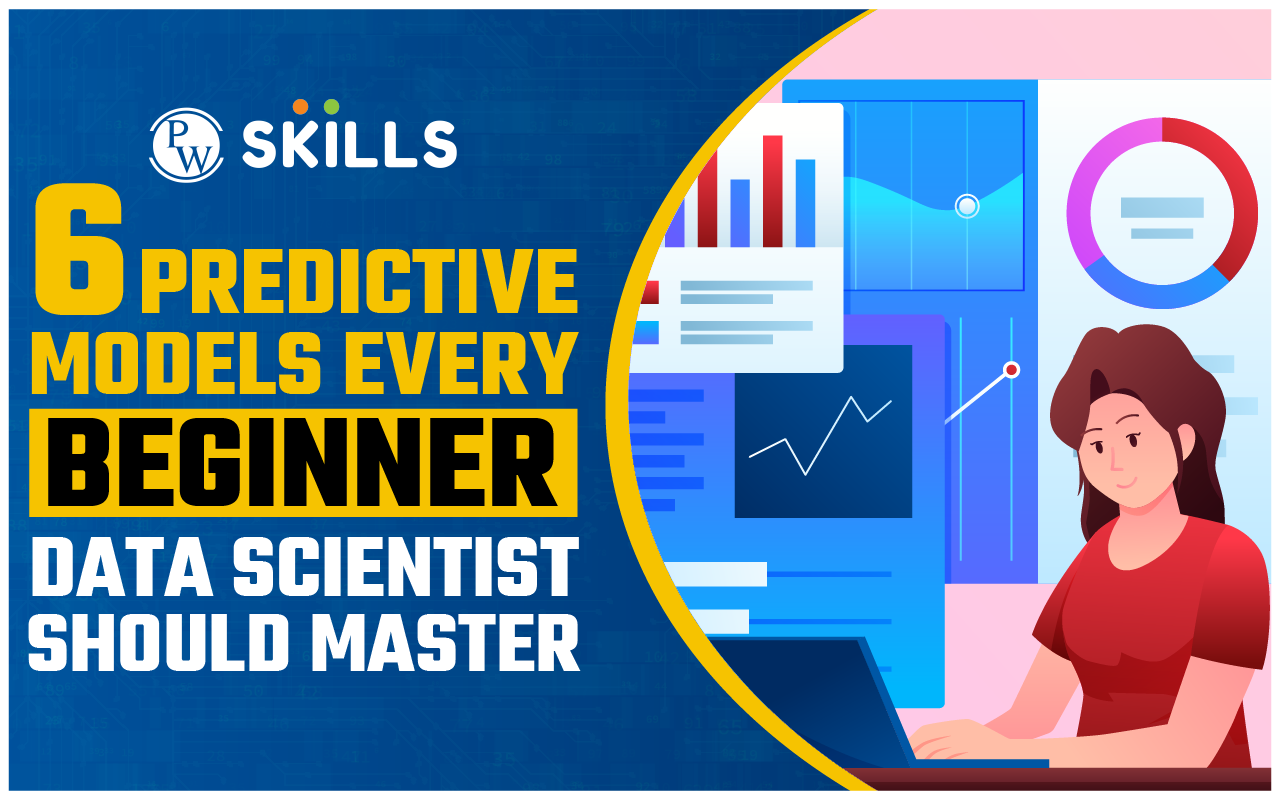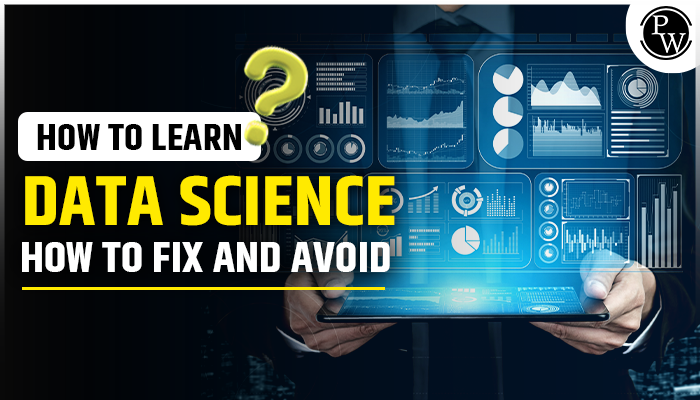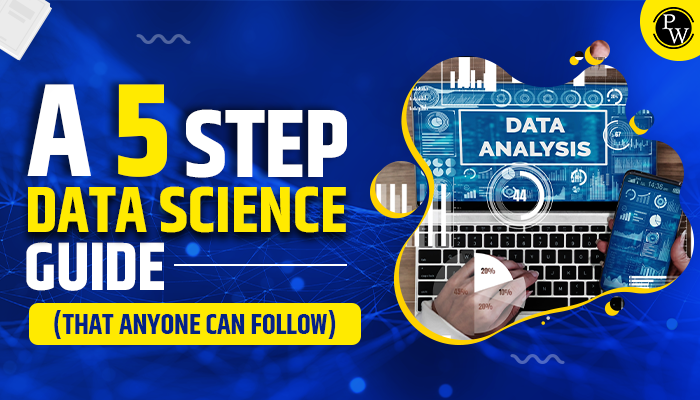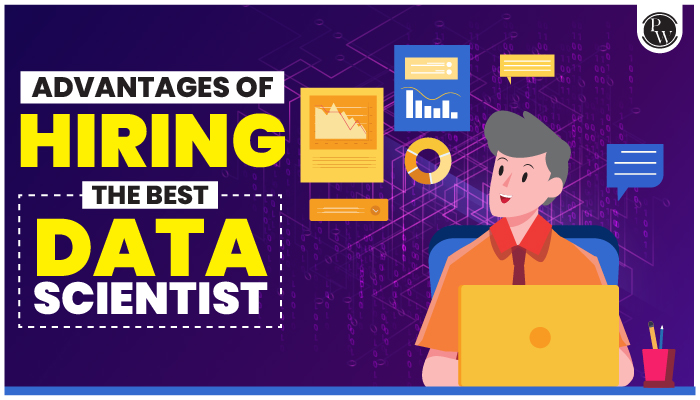Data Science Models: The journey into the world of data science often begins with a quest to understand and harness the capabilities of predictive models. These models are the bedrock upon which data-driven decisions are made, empowering businesses to optimise processes, enhance user experiences, and gain a competitive edge in the market. In this blog, we’ll talk about six predictive data science models that every beginner data scientist should aspire to master.
If you’re looking to secure a high-paying job in data science, then the Data Science with ML Course course can help you a lot! Our course is taught by industry-leaders. Hence, you’ll be equipped with all the skills you need to succeed in your career.
6 Predictive Data Science Models

Linear regression models relationships between a dependent variable and independent variables using a fitted linear equation. The aim is to discover the optimal line, minimising the sum of squared differences between observed and predicted values.
1. Linear Regression
Linear regression models relationships between variables by fitting a linear equation to observed data. The aim is to minimise the difference between actual and predicted values with the best-fit line.
Application
Linear regression is commonly applied in scenarios where there is a continuous outcome to predict. For example, predicting sales based on advertising expenditure, estimating house prices based on various features, or forecasting stock prices.
Key Concepts
- Coefficients: Represent the weights assigned to each independent variable.
- Intercept: Represents the value of the dependent variable when all independent variables are zero.
- Residuals: The differences between actual and predicted values.
2. Logistic Regression
Logistic regression is used for binary classification problems where the dependent variable has two possible outcomes. It models the probability that a given instance belongs to a particular category.
Application
Logistic regression finds applications in spam detection, credit scoring, and medical diagnoses where the outcome is binary, such as whether an email is spam or not, whether a customer will default on a loan, or whether a patient has a particular medical condition.
Key Concepts
- Log-Odds: The natural logarithm of the odds ratio, which is modelled linearly.
- Sigmoid Function: Transforms the linear combination of variables into a range between 0 and 1, representing probabilities.
3. Decision Trees
Decision trees are a non-linear model that recursively splits the data based on the most significant attribute at each node, creating a tree-like structure. Each leaf node represents the predicted outcome.
Application
Decision trees are used for both classification and regression tasks. They are particularly useful when dealing with complex decision-making processes and are employed in areas such as customer churn prediction and fraud detection.
Key Concepts
- Nodes: Decision points in the tree where data is split.
- Leaves: Terminal nodes that represent the final outcome.
- Entropy/Gini Index: Measures the impurity of a node, guiding the tree to make decisions that result in the most homogeneous leaves.
4. Random Forest
Random Forest is an ensemble learning method that constructs multiple decision trees during training and outputs the mode of the classes (classification) or mean prediction (regression) of the individual trees.
Application
Random Forest is versatile and effective across various domains, including finance, healthcare, and marketing. It excels in improving predictive accuracy and handling overfitting.
Key Concepts
- Ensemble Learning: Combining the predictions of multiple models to enhance overall performance.
- Bagging: Building each tree on a random subset of the data, reducing the risk of overfitting.
- Feature Importance: Assessing the significance of each variable in making predictions.
5. Support Vector Machines (SVM)
Support Vector Machines are supervised learning models that analyse data for classification and regression analysis. They work by finding the hyperplane that best divides a dataset into classes.
Application
SVMs are applied in image classification, text categorization, and biological data analysis. They are particularly effective when dealing with high-dimensional data.
Key Concepts
- Hyperplane: The decision boundary that separates data into different classes.
- Support Vectors: Data points that are closest to the hyperplane and influence its position.
- Kernel Trick: Transforming data into a higher-dimensional space to make it more separable.
6. Neural Networks
Neural networks, inspired by the human brain, consist of interconnected nodes organised into layers. Deep learning involves training neural networks with multiple hidden layers to learn complex patterns in data.
Application
Neural networks find applications in image and speech recognition, natural language processing, and autonomous vehicles. They are capable of capturing intricate relationships in large datasets.
Key Concepts
- Neurons: Nodes in the network that receive inputs, apply weights, and produce an output.
- Layers: Organised levels of neurons, including input, hidden, and output layers.
- Activation Functions: Non-linear functions applied to the output of neurons, enabling the network to learn complex mappings.
Data Science Models in Python
Python, recognized as the versatile tool in programming, is widely embraced by global data scientists. Its ease, clarity, and diverse libraries position it as the preferred language for those exploring the dynamic realm of data science. As we navigate the expansive landscape of predictive modelling, understanding the role Python plays in this journey becomes paramount.
Python’s Dominance in Data Science
Python’s ascent in data science owes much to its readable syntax and versatility, effortlessly connecting statistical analysis and machine learning. The language’s intuitive and expressive qualities make it a top pick for data scientists, statisticians, and machine learning enthusiasts. Python’s readability not only facilitates the initial learning curve but also streamlines collaboration within multidisciplinary data science teams.
Python’s open-source community drives the creation of many libraries for data science. The combo of Python’s simplicity and its strong ecosystem puts it at the forefront of the data science revolution.
Essential Python Libraries for Predictive Modelling
In the realm of predictive modelling, Python offers a treasure trove of libraries that cater to various facets of the data science workflow. Let’s explore some of the essential libraries that every aspiring data scientist should acquaint themselves with:
Scikit-Learn: A Swiss Army Knife for Predictive Modelling
Central to numerous data science endeavours, Scikit-Learn stands out as an open-source machine learning library, furnishing effective tools for data analysis and modelling. Boasting a uniform API, it simplifies the exploration of diverse algorithms. Particularly welcoming to newcomers, Scikit-Learn provides an approachable initiation into the realm of machine learning, emphasising simplicity and practicality.
TensorFlow and PyTorch: Powering Deep Learning Endeavours
For deep learning, TensorFlow and PyTorch are crucial. TensorFlow, from Google, is great for deep neural networks. PyTorch, backed by Facebook, is flexible with dynamic computation graphs, making it excellent for researchers and practitioners.
Pandas: Taming Data with DataFrames
Pandas is vital in data science, excelling in data manipulation. It introduces the DataFrame, a powerful two-dimensional table for efficient organisation, manipulation, and analysis of data. Mastering Pandas is like honing the skill of data wrangling, essential for handling real-world datasets.
Matplotlib and Seaborn: Crafting Visual Narratives
Effective data communication often involves visualisation, and Matplotlib and Seaborn are go-to libraries for creating compelling visualisations. Matplotlib provides a wide range of static, animated, and interactive plots, while Seaborn simplifies the process of creating aesthetically pleasing statistical graphics.
Key Python-based Algorithms for Beginners
With the foundational understanding of Python’s role in data science, let’s explore some key algorithms that serve as the building blocks for predictive modelling:
Linear Regression: The Gateway to Predictive Modelling
Linear regression, a foundational aspect of predictive modelling, offers a straightforward yet potent method for predicting a continuous variable using one or more predictor features. Its simplicity and easy implementation make it an ideal starting point for those beginning their data science journey.
Decision Trees and Random Forests: Harnessing Ensemble Learning
Decision trees offer an intuitive representation of decision-making processes, breaking down complex problems into a series of simple decisions. Random forests, a collection of decision trees, take predictive accuracy to new heights by aggregating the results of multiple trees. Understanding these algorithms equips data scientists with tools for both interpretability and predictive power.
Data Science Models in Software Engineering
Data science models and software engineering synergize, bridging theoretical knowledge to real-world impact. This section delves into integrating predictive models into the software development lifecycle, emphasising the practical application of data science within software engineering’s broader context.
Connecting the Dots: Data Science and Software Engineering
Data science models, while powerful in their predictive capabilities, only realise their true potential when seamlessly integrated into software applications. The collaboration between data scientists and software engineers is pivotal, ensuring that the models not only perform well but are also scalable, maintainable, and align with the goals of the broader system.
Scalability and Efficiency: Efficient integration requires careful consideration of the scalability of the models. As data volumes increase, the model’s ability to handle larger datasets without sacrificing performance becomes crucial. Optimising algorithms and leveraging parallel processing are key strategies in this regard.
Real-time Applications: In certain scenarios, especially in industries like finance or healthcare, real-time predictions are imperative. Software engineers play a crucial role in architecting systems that can accommodate the low-latency requirements of these applications, ensuring that predictions are delivered in near real-time.
Deployment Strategies for Data Science Models
Deploying a predictive model into a production environment involves more than just writing code—it requires a deep understanding of software engineering principles. Several deployment strategies are commonly employed:
Microservices Architecture: Breaking down the application into smaller, independent services allows for flexibility and scalability. Data science models can be encapsulated within microservices, making it easier to update and scale specific components without affecting the entire system.
Containerization: Technologies like Docker enable the packaging of models and their dependencies into containers, ensuring consistent performance across various environments. Container orchestration tools like Kubernetes facilitate the deployment, scaling, and management of these containers.
Restful APIs: Exposing models through RESTful APIs (Application Programming Interfaces) enables seamless communication between the model and other components of the application. This abstraction allows for easier maintenance and updates without disrupting the overall system.
Data Science Models Examples
Concrete examples of predictive data science models in action provide valuable insights into their real-world applications. Let’s explore a few scenarios where these models shine:
Predictive Maintenance in Manufacturing
Predictive maintenance models analyse historical data from machinery to predict when equipment is likely to fail. By identifying potential issues before they occur, manufacturers can schedule maintenance proactively, minimising downtime and reducing operational costs.
Customer Churn Prediction in Telecommunications
Telecom companies leverage predictive models to forecast the likelihood of a customer discontinuing their services. By identifying potential churners, companies can implement targeted retention strategies, such as personalised offers, to retain valuable customers and enhance overall customer satisfaction.
Fraud Detection in Finance
In the financial sector, predictive models analyse transactional data to identify patterns indicative of fraudulent activity. By continuously learning from new data, these models can adapt to evolving fraud tactics, providing a robust line of defence against financial crimes.
These examples underscore the versatility and impact of predictive data science models across diverse industries. The ability to apply these models to solve specific, real-world problems is a testament to the practical relevance of data science in today’s technology-driven landscape.
Algorithm Modelling in Data Science
Algorithm modelling is crucial for predictive data science. It lays the foundation for building models that reveal patterns and predict outcomes. Here, we’ll explore key algorithms fundamental to predictive modelling and their real-world applications.
Understanding the Fundamentals of Algorithms in Data Science
At its essence, an algorithm is a systematic step-by-step procedure or formula for problem-solving. In data science, algorithms are mathematical constructs processing input data to generate an output, often a prediction or classification.
Supervised Learning Algorithms: In supervised learning, models are trained on labelled datasets, where the algorithm learns the mapping between input features and corresponding output labels.
Algorithm Selection for Data Science Applications
Choosing the right algorithm is a crucial decision in the data science modelling process. The selection depends on the nature of the problem at hand, the characteristics of the dataset, and the desired outcome. Considerations include:
Nature of the Problem: Is the task a regression problem (predicting a continuous variable) or a classification problem (predicting categories or labels)? The answer guides the selection of algorithms tailored to the specific task.
Dataset Characteristics: The size and complexity of the dataset influence algorithm performance. Some algorithms excel with large, complex datasets, while others are more suitable for smaller, simpler datasets.
Interpretability: Depending on the application, the interpretability of the model may be crucial. Decision trees, for example, offer a transparent decision-making process, aiding in the understanding of how the model arrives at predictions.
Data Science Modelling Techniques
In the dynamic field of data science, mastering predictive models goes beyond just understanding algorithms; it involves employing a range of techniques to ensure the models are robust, accurate, and applicable to diverse datasets. Here, we delve into the essential data science modelling techniques that every aspiring data scientist should be well-versed in.
Feature Engineering
Feature engineering is the art and science of transforming raw data into a format that enhances the performance of machine learning algorithms. It involves selecting, modifying, or creating new features from the existing dataset to improve the model’s ability to make accurate predictions. This technique is particularly crucial when dealing with complex datasets where the relevance and quality of features significantly impact model outcomes.
Cross-Validation
Cross-validation is a crucial technique for assessing a model’s performance and generalizability. Instead of relying on a single train-test split, cross-validation involves partitioning the dataset into multiple subsets, training the model on different combinations of these subsets, and evaluating its performance across each iteration. The most common form of cross-validation is k-fold cross-validation, where the dataset is divided into k subsets, and the model is trained and evaluated k times.
Hyperparameter Tuning
Hyperparameters are external configurations that are not learned from the data but significantly impact a model’s performance. Tuning these hyperparameters is a critical step in optimising a predictive model. Techniques for hyperparameter tuning involve systematically adjusting the hyperparameter values to find the combination that results in the best model performance.
Ensemble Learning
Ensemble learning involves combining predictions from multiple models to create a more robust and accurate model. The idea is that by aggregating the predictions of diverse models, the weaknesses of individual models are mitigated, leading to improved overall performance. Random Forest, a popular ensemble learning method, builds multiple decision trees and combines their outputs.
Model Interpretability
Understanding the decisions made by predictive models is crucial, especially in scenarios where the “black box” nature of some models may pose challenges in gaining stakeholders’ trust. Model interpretability techniques aim to provide insights into how a model arrives at a particular prediction.
Model Evaluation Metrics
Selecting appropriate evaluation metrics is crucial for assessing a model’s performance accurately. The choice of metrics depends on the nature of the problem—classification, regression, or clustering—and the specific goals of the modelling task.
Conclusion
In the vast landscape of data science modelling techniques, mastering these approaches is akin to becoming a skilled artisan, sculpting meaningful insights from raw data. Feature engineering transforms data into a form that unveils its hidden patterns, cross-validation ensures a model’s robustness, hyperparameter tuning optimises its performance, ensemble learning fortifies its accuracy, and interpretability techniques demystify its decision-making process.
Elevate your career to new heights with our Data Science with ML Course. Gain a competitive edge in the data-driven world by mastering programming, statistics, machine learning, and more. Enrol now and transform yourself into a data science expert!
Data Science Models FAQs
What is feature engineering, and why is it important in predictive modelling?
Feature engineering is the process of transforming raw data to enhance model performance. It is crucial for improving accuracy, reducing noise, and making models more interpretable.
What role does cross-validation play in predictive modelling?
Cross-validation assesses a model's performance across multiple subsets of data, reducing overfitting risks and providing a more reliable estimate of its ability to generalise.
How does hyperparameter tuning impact model optimization?
Hyperparameter tuning involves adjusting external configurations to optimise model performance. It's crucial for finding the right balance between overfitting and underfitting.
What distinguishes ensemble learning in predictive modelling?
Ensemble learning combines predictions from multiple models to enhance accuracy and robustness. Methods like bagging (e.g., Random Forest) and boosting improve overall model performance.
Why is model interpretability essential in data science?
Model interpretability techniques, like feature importance and partial dependence plots, provide insights into a model's decision-making process, enhancing trust and understanding.
What is the significance of precision and recall in classification metrics?
Precision measures the accuracy of positive predictions, while recall gauges the model's ability to capture all relevant instances. Balancing these metrics is crucial based on the problem context.
How does LIME contribute to model interpretability?
LIME (Local Interpretable Model-agnostic Explanations) generates locally faithful explanations for individual predictions, aiding in understanding complex models.
Can you explain the concept of bootstrapping in bagging methods?
Bootstrapping involves creating multiple subsets of the training data by randomly sampling with replacement. In bagging, each subset is used to train a different model, contributing to ensemble learning.
Why is balancing model accuracy and interpretability crucial?
Striking the right balance ensures that a model is both accurate and understandable, catering to the needs of stakeholders and facilitating trust in the model's predictions.
What challenges arise in tuning hyperparameters for predictive models?
Striking a balance between overfitting and underfitting can be challenging. Careful consideration of the model complexity and data characteristics is crucial in this process.




